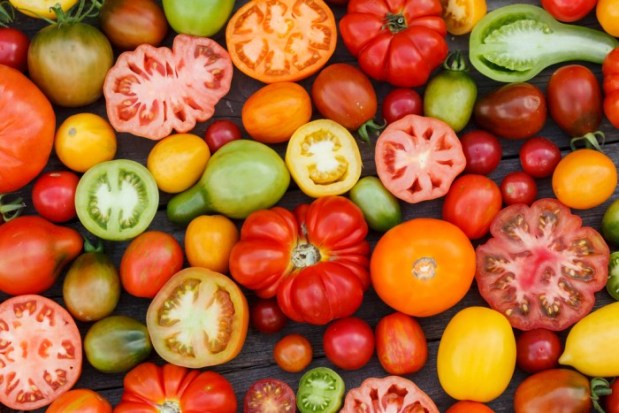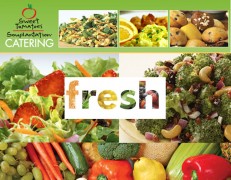Why One Restaurant Chain Says ‘No’ To EMV

If you’re a restaurant, it’s not easy going – but not because your job is to feed hungry people. According to Garden Fresh CIO Eric Rosenzweig, the problem is deciding what goes on the digital menu and when to roll it out. Rosenzweig gives MPD CEO Karen Webster his views on everything from EMV to mobile payments to digital loyalty. The answers may surprise you.
Hungry? No, of course you aren’t, the work day has just started and you’ve already had breakfast. You probably aren’t even thinking about lunch yet.
But come lunchtime you will have a choice to make — and most people make the wrong choice. According to studies, only 20 percent of Americans take a “real” lunch break, with real being defined as leaving your office, going someplace to eat lunch and returning an hour later.
The other 80 percent are statistically likely to be eating a sandwich/salad they brought from home at their desk; doing the same thing in the designated office kitchen/eating area; grabbing QSR food and eating it on their walk/drive back to their office; or just skipping lunch entirely.
According to the Bureau of Labor statistics, Americans between the ages of 25 and 54 who have children spend 1.2 hours (1 hour and 12 minutes) eating per day. Odds are they aren’t spending the bulk of it at lunch and leaving themselves 6 minutes apiece for breakfast and dinner.
But that 20 percent who will bravely go out and seek lunch, and of that elect group thousands nationwide will stream into Souplantations or Sweet Tomatoes, the two chains run by California-based Garden Fresh Restaurant Corp. Garden Fresh restaurants are buffet style, but are probably not what you think about when you hear the word “buffet.” While buffets — particularly large national buffet chains — can often conjure mental images of large piles of unhealthy food of questionable quality, Garden Fresh is all about … well, freshness.
“We’re really focused on farm-to-table fresh ingredients and allowing consumers to customize their orders,” Eric Rosenzweig, Chief Information Officer at Garden Fresh Restaurant Corp., told MPD CEO Karen Webster in a recent discussion.
Garden Fresh locations offer about 50 feet of fresh salad bar, eight homemade soups, various pastas, various breads and desserts. All ingredients are farm fresh — most of what they serve was living on a farm 48 hours before they served it — and everything is made from scratch.
“We are really in the sweet spot when we look at trends. What we see is people increasingly asking for healthy and locally sourced; we do both of those things,” Rosenzweig told Webster, also noting that while Garden Fresh is in line with current trends, they aren’t exactly trendy since the business has been pushing farm fresh food for 38 years.
What’s on the menu right now? Items include a red, white and blue bacon potato, El Paso lime and chicken soup, arugula citrus salad and Valencia orange soft serve.
Admit it, you’re hungry, meaning you know exactly how Webster felt during her chat with Rosenzweig. And, in fact, Garden Fresh is quite good at making people hungry, so much so that the firm which got its start in California nearly four decades ago has now spread across the U.S., with locations in all of the states of the West and Southwest, three states in the Midwest (Kansas, Missouri and Illinois), Texas, Georgia, North Carolina and Florida.
And with such a long track record of success — something that is not easy to come by in the restaurant industry — Rosenzweig says part of the name of the game is about evolving, as opposed to just immediately changing with every new thing that comes along.
Including using mobile to engage consumers.
“We are looking more at loyalty and how mobile can help us provide a mobile experience that is worthwhile for our users,” Rosenzweig told Webster. “Line busting, when consumers can order ahead and pay ahead so they can just come in and grab food. Our concept is tough to do, because consumers build their salad before they get to our cash wrap.”
And this, he said, is really the biggest challenge they face as a restaurant in adopting mobile —finding the right combination of features to make it really appealing to users.
“I think that’s the biggest struggle for us,” Rosenzweig said. “Why would someone have a Garden Fresh app? If we can’t provide something of value, it is going to be really challenging.”
Garden Fresh, of course, has digital relationships with its customers, but currently Rosenzweig said it is folded in under their company’s email-based membership program where once a week the 2 million or so people on their email list receive updates and offers. This program, Rosenzweig noted, has been a success, and when they think about building mobile loyalty programs, they are thinking about using mobile as an extension of (and an improvement on) a working (but getting out-of-date) process.
Because according to Rosenzweig, in the restaurant business, the decisions —about digital loyalty, about payments, about the menu and really any element of the business — is about being pragmatic.
Which, he said, is why Garden Fresh, despite its size and number of locations, is not EMV compliant, and does not have EMV-specific plans.
“We haven’t [updated for EMV]. And, in the restaurant industry in general, the motivation has been lacking to do that update,” Rosenzweig said. “While the shift of liability is coming in October for those of us in the restaurant business, we have a very low chargeback and fraud rate we’ve seen over the years. That shift in liability does not mean that much to us. To make an investment in refreshing tons of terminals, we have to be pretty sure it is something that is going to work, improve business and continue to work for a very long time.”
Right now, Rosenzweig said, EMV alone is not enough of a business case. Plus he noted, there are concerns with it actually making their business run less well.
“We have 1,000 or more guests per day in our locations,” he said. “And from our standpoint, it is all about efficiency. And that cashier is one of the only places where the consumer interacts with a staff member in our restaurant. It has to be as simple an interaction as possible.
“Mag stripe works well for that now,” he said. “We don’t want to get caught with a cashier having to figure out what is happening. Slower is a problem for us. We can’t have a transaction go from 15 seconds to two minutes.”
Which is not to say that Garden Fresh restaurants will never be EMV compliant — they may well become some so, but only because EMV comes as a secondary feature to the products they are actually interested in.
“For us, the bigger thing is mobile payments — the Apple Payments or Google Payments — for us it’s about having a multi-use terminal for payments because we really want a whole platform to grow with us as the industry grows,” Rosenzweig said.
But, as Rosenzweig noted, there’s no rush to adoption from their end, because in their business it is all about doing it right.
For us to replace more than 450 terminals out there is a pretty expensive endeavor,” he told Webster. “It is like anything else in our business, if we can’t do it right, we don’t want to do it at all.”
All of retail is about giving the customer what he or she wants, but that is particularly true in restaurants. Why? Because hungry people can become the most demanding people on Earth. Once fed, they become the happiest and most pleasant people on Earth. Restaurants have to guide people from the haze of being angry to the bliss of being content.
Which, according to Rosenzweig, is both very simple and very complex. Restaurants just have to make sure consumers can eat, order, pay and be rewarded — whenever they want. The challenge, he said, is finding the right toolbox to help make it all happen.
